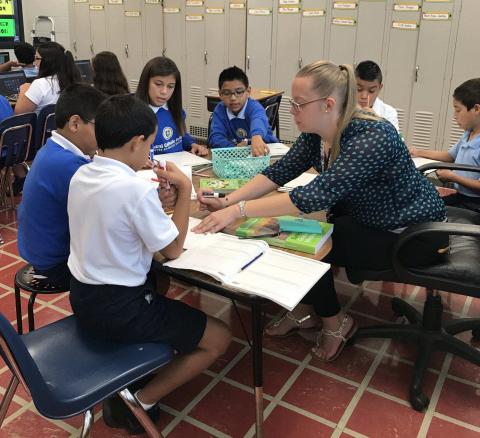Audiobooks, Literature Circles, and the Goldilocks Dilemma
Podcasts and audiobooks have become wildly popular over the past few years. According to an article in Forbes Magazine (March 2018), "Audiobooks are up about 20% year over year across the publishing industry for the first eight months of 2017, according to the Association of American Publishers' data reports from 1,200 publishers." Part of their success and rapid rise in popularity may be due to the increased accessibility of technology. Many people can download audiobooks through their phones, iPads, and other electronic devices. Most public libraries also have apps where patrons can listen to audiobooks for free.

You may be wondering how audiobooks relate to book clubs, literature circles, and the Goldilocks dilemma. Teachers can offer student choice in literature circles and book clubs, which honors student agency and enjoyment in the reading process. However, when faced with choice, students must deal with the Goldilocks dilemma; they find it difficult to find a book that is at their level–not too hard, not too easy, but just right. Audiobooks offer one way to increase students' access and engagement to texts that might be "too easy" or "too hard."
Here are steps a teacher can follow to set up a literature circle or book club, as well as suggestions for how to incorporate audiobooks when children don't pick out "just right" books:
1. Select a theme
First, the teacher should select a theme or focus for his or her literature circle or book club meeting. In a literature circle or book club, a large class typically splits up into smaller groups. Each of these groups usually reads and discusses a different novel or title, so there could be 4 or 5 different books in use in the classroom at once. The teacher can use books of various genres that all deal with a similar topic. For example, an eighth-grade teacher might do a unit on the Holocaust and choose several books, both fiction and non-fiction, that deal with that topic.
2. Set up reading groups
Once the teacher has chosen a theme, he or she must determine student groups. There are several ways to go about this process.

- Option 1: The teacher selects books for her students. The teacher chooses books with similar content but at various different reading levels. Using the example theme above, one high-level group in an eighth-grade class might read The Diary of Anne Frank while a mid-level group might read Number the Stars. In this way, the teacher ensures there are books to fit each child's reading level so they can both learn the content and experience success with the act of reading.
- Option 2: The teacher can offer more choice to the students by conducting book talks–a brief introduction and a teaser to pique interest for each book–and allow the students to pick a book. When the teacher opts for the latter approach, students have more freedom to choose a book based on the content, the length (number of pages), and/or the difficulty of the text.
When the teacher allows book choice, sometimes students select a book based on factors that seem irrelevant, such as which books their friends choose. We can all appreciate the importance of social interactions, but as educators entrusted to improve all students' literacy development and achievement, what can we do when a child selects a book that is either far beyond their reading level or far below?
Here is where audiobooks, among other strategies, might be useful. We have no doubt that teachers have a long list of suggestions, so hopefully, we can add to an existing list to achieve multiple goals: (1) honoring students' choices to increase their engagement and motivation to read, (2) improving students' literacy growth, especially comprehension; and (3) supporting students in developing positive reader identities.
Anticipate Solutions for Goldilocks Readers

- When a student has chosen a book that's too hard, here's what teachers can do during reading time:
-
- Provide a hard copy of the book, headphones, and audiobook. Teachers might build a library of audio recordings during the summer to use during the school year.
- Have older or more experienced students audio-record each section ahead of time (could count as "service hours" or others come with small tokens of appreciation).
- Speak with the child's family and ask that they read/reread assigned pages with their child at home.
- Offer all students the option of partner reading and ensure that each student who needs additional support reads with a partner.
- Pull students during independent reading time to read their book with the teacher.
- When a student has chosen a book that is too easy, here is what that child can do when they finish reading the assigned pages:
- Read the second book of related content to continue reading (can be student selected).
- Record read alouds of other books.
- Engage in additional research to share out to their group or class. The student might even become an 'expert' in some aspect related to the reading, and the teacher can consult him/her when students ask questions.
- Address an additional writing component to have the student dig deeper into the text.
- Write book reviews to be included in a class book.
- Partner read with a student who may need additional support (Teachers, be cautious of always having the more experienced readers work with less experienced as this can compromise relationships).
How do you ensure that your students still have a choice of texts for literature circles and the additional support or challenges to ensure success, literacy growth, engagement, and motivation? Do you already use audiobooks or are you willing to incorporate these tools into your classroom in the future? We would love to hear your ideas!
Learn more about blending instruction and technology through Higher-Powered Learning, the Alliance for Catholic Education's blended learning program.
Happy Reading,
Ernest and Jodene
